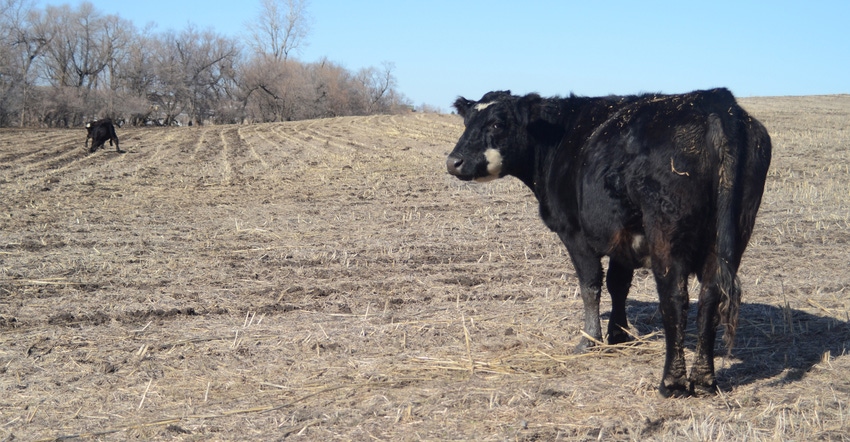December 5, 2019

After soybeans are harvested, cows sometimes are put out on the residues to graze. Some bean residues are even baled. But how good is this feed?
We're all familiar with the usefulness of grazing cornstalks, but I see more and more residue from soybean fields grazed every year. Cows seem to like licking up what's left behind after combining. But frankly, I'm a little concerned that some folks may think their cows are getting more from those soybean residues than what truly is there.
The problem is a matter of perception. When most of us think of soybeans, we think high protein, so we expect soybean residues will be a high-protein feed, too. Unfortunately, the opposite is true; soybean residue is very low in protein.
Soybean stems and pods contain only about 4% to 6% crude protein, well below the 7% to 8% needed for minimum support of a dry beef cow. Even though leaves can be up to 12% protein, it's only about one-third digestible, so that's not much help. In fact, protein digestibility is low in all bean residues.
Energy is even worse. TDN (total digestible nutrients) averages between 35% and 45% for leaves, stems and pods. This is even lower than wheat straw. As a result, cows fed only bean residue can lose weight and condition very quickly. Heavy supplementation is needed to maintain cow health.
This doesn't mean soybean residues are worthless for grazing or even baled. They can be a good extender of much higher-quality hay or silage. However, cattle must be fed quite a bit of higher-energy and protein feeds to make up for the deficiencies in soybean residues.
Don't be misled into thinking bean residues are as good or better than cornstalks. Otherwise, you and your cows will suffer the consequences.
Anderson is a Nebraska Extension forage specialist.
Source: UNL BeefWatch, which is solely responsible for the information provided and is wholly owned by the source. Informa Business Media and all its subsidiaries are not responsible for any of the content contained in this information asset.
About the Author(s)
You May Also Like




